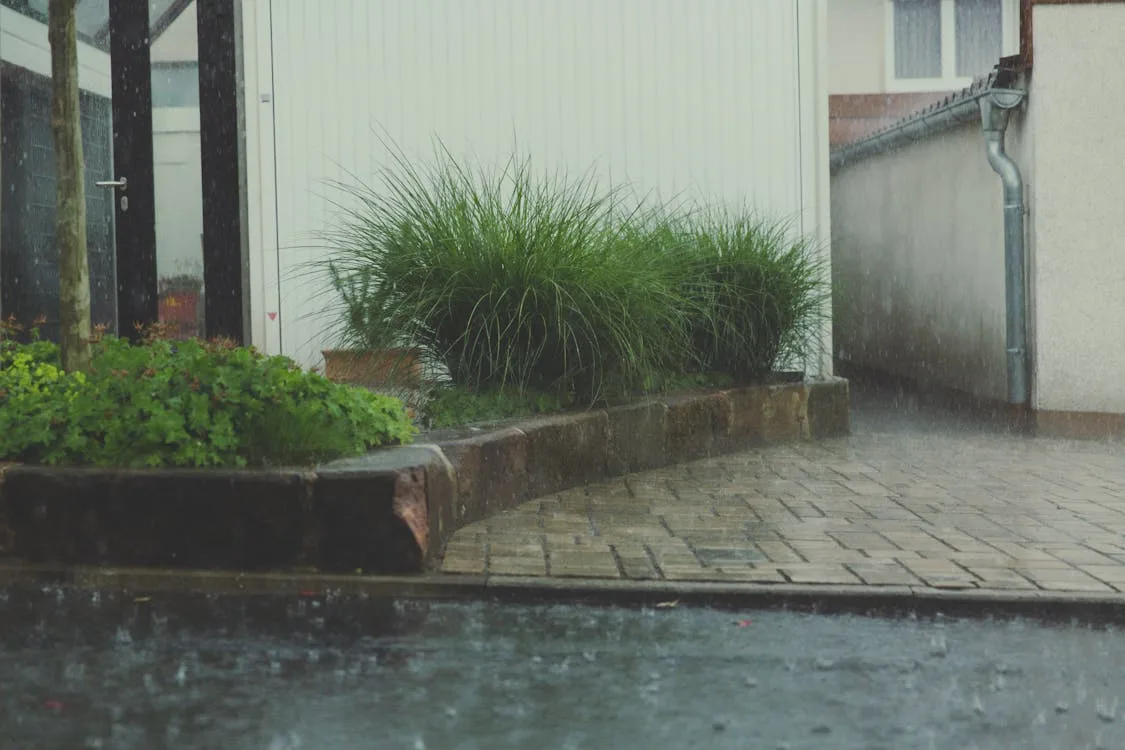Essential Exterior Upgrades to Protect Your Home from Water Damage
Fresno, CA is known for its warm, dry summers—but when the rainy season hits, it brings steady downpours that can cause serious problems for homeowners. If your home isn’t ready, even moderate rain can lead to water seeping into walls, pooling around your foundation, or damaging your landscaping. In many neighborhoods across Fresno, small signs of water damage often go unnoticed until repairs become expensive.
Most homeowners focus on what’s happening inside the house, but many water issues actually begin outside. The way your home sheds water—from the roof to the ground—can make the difference between long-term protection and costly damage. That’s why exterior upgrades deserve attention before the wet months arrive.
These upgrades don’t always require a major remodel. In many cases, they’re simple projects that can help you protect your home from avoidable water-related problems. One of the first areas to take a closer look at is your rain gutter system.
Inspecting and Replacing Rain Gutters
Gutters are meant to collect rainwater from your roof and move it away from your house. But in Fresno, clogged or damaged gutters are common. Leaves from backyard trees, dust from dry summers, and years of wear can lead to blockages, sagging sections, or even detached runs. When gutters aren’t doing their job, water flows down the siding, collects near the base of the house, or seeps into crawl spaces.
A question many homeowners ask during fall maintenance is: do I need new rain gutters in Fresno, CA? It’s a valid concern, especially for those living in homes that are more than 15–20 years old. You might notice water spilling over the edges during rain, rust spots along the seams, or signs of mold near the foundation. All of these could mean it’s time to consider a replacement.
Some people wait until water damage becomes visible, but it’s smarter to act when small issues show up. Replacing old gutters with seamless aluminum or steel options can give your home better protection during future storms. There are also gutter guard systems that help block leaves and reduce how often you need to clean them.
Professionals in Fresno often recommend a full inspection before winter. This helps catch small problems that might grow worse over time. If you’re already planning roof repairs or repainting the exterior, it’s a good time to look at your gutters too. They work together with your roof and drainage system, so one weak spot can lead to bigger issues.
Once you’ve handled the gutters, it’s time to look at where that water goes. The next step in keeping water away from your house involves checking your downspouts and how well they move water away from your foundation.
Extending Downspouts and Improving Drainage
Once your gutters are working properly, the next step is managing where all that water ends up. In many homes, downspouts drop water just a foot or two from the foundation. That’s not far enough. Water that collects near the base of your home can slowly seep into the ground, affecting the foundation or even the crawl space.
A simple way to fix this is by adding extensions to your downspouts. These can guide water four to six feet away from the house, which helps reduce the risk of moisture buildup around the structure. For homes with larger yards or uneven terrain, underground drainage pipes might be a better option. These systems direct water through buried piping toward a lower point in your yard, a gravel pit, or even a curb drain.
Splash blocks also help in smaller areas. They sit under the downspout and guide water outward in a controlled way. This keeps soil from eroding near your home and helps protect flower beds or lawn edges from being washed out.
Good drainage goes beyond the home—it supports the health of your landscaping, protects walkways, and helps avoid standing water that could attract insects or mold.
Grading the Landscape Around Your Foundation
Even the best gutters and downspouts won’t help if the land around your home slopes the wrong way. The soil should angle away from the house so that rainwater flows outward rather than settling at the base. This is called grading.
Over time, soil can settle or shift. You might not notice until puddles start forming after a storm. Low spots along the edge of your house are a sign that grading might be needed.
To check your grading, use a simple level and a straight board. Place the board against the ground near your foundation and see if the slope moves downward. If not, it may be time to add soil and reshape the area. Use compacted fill dirt rather than loose topsoil to hold the shape better over time.
Fixing grading doesn’t always need a landscaping crew. In many cases, homeowners can handle small sections over a weekend with a few basic tools. It’s a useful project that helps protect both the structure and the yard.
Sealing Windows, Doors, and Siding
Not all water damage comes from the roof or ground. Sometimes, it sneaks in through small gaps around windows, doors, or siding. In a dry climate, materials expand and contract throughout the year. This movement can create cracks that let rainwater in during storms.
Look around your doors and windows for signs of peeling paint, soft wood, or dark spots. These may mean water is getting in. Use weatherproof caulk to seal gaps. For larger spaces or joints between siding panels, flashing tape or new trim might be needed.
Sealing takes just a few hours but can prevent bigger problems like mold, wall damage, or warped flooring. It’s worth doing before the rainy season begins.
Installing or Repairing French Drains
For homes with ongoing drainage issues—like soggy lawns or water pooling along fences—a French drain could help. This is a gravel-filled trench with a perforated pipe that collects and redirects water. It’s buried just below the surface and hidden once the area is covered.
French drains are useful in areas with heavy soil or slight slopes, both of which are common in parts of Fresno. You might need one near a patio, behind a retaining wall, or along the back of a property that holds runoff.
Smaller versions can be done by hand, but larger systems often need professional help. The upfront cost can be worth it if water has been a problem year after year.
Water damage doesn’t always come from major storms. Often, it starts with small problems—overflowing gutters, poor grading, or cracks around a window. By taking time to look at your home’s exterior, you can find areas that need attention before real damage happens. With the right upgrades, your home can stay dry, safe, and ready for whatever the season brings.







